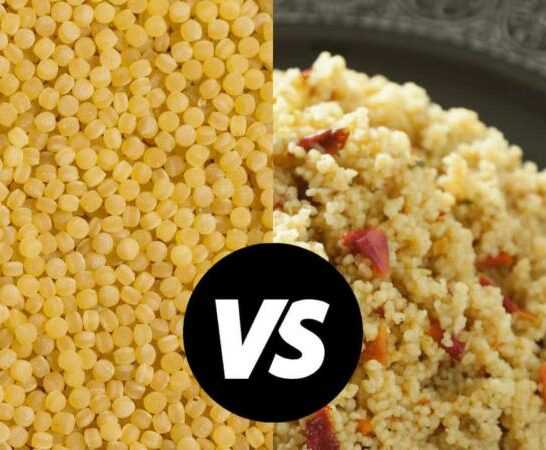What is the difference between acini de pepe vs couscous? Acini di Pepe and couscous are very similar types of pasta. Although they have differences, they are good substitutes for each other.
They are both wheat products and are small-grained and circular.
Acini de Pepe and couscous are popular pasta for dishes that look for a different texture.
Even though they seem like they could be interchangeable, they are vastly different after cooking.
Couscous vs Acini de Pepe
Acini di Pepe and couscous are both tiny pastas looking like pearls. They are both made of wheat and water. They can be used as substitutes for each other. They have different textures, and flavors once prepared as Israeli couscous is often toasted. Acini di Pepe is more suitable for brothy soups or pasta salads. While couscous is pasta, it is ideal for lighter dishes.
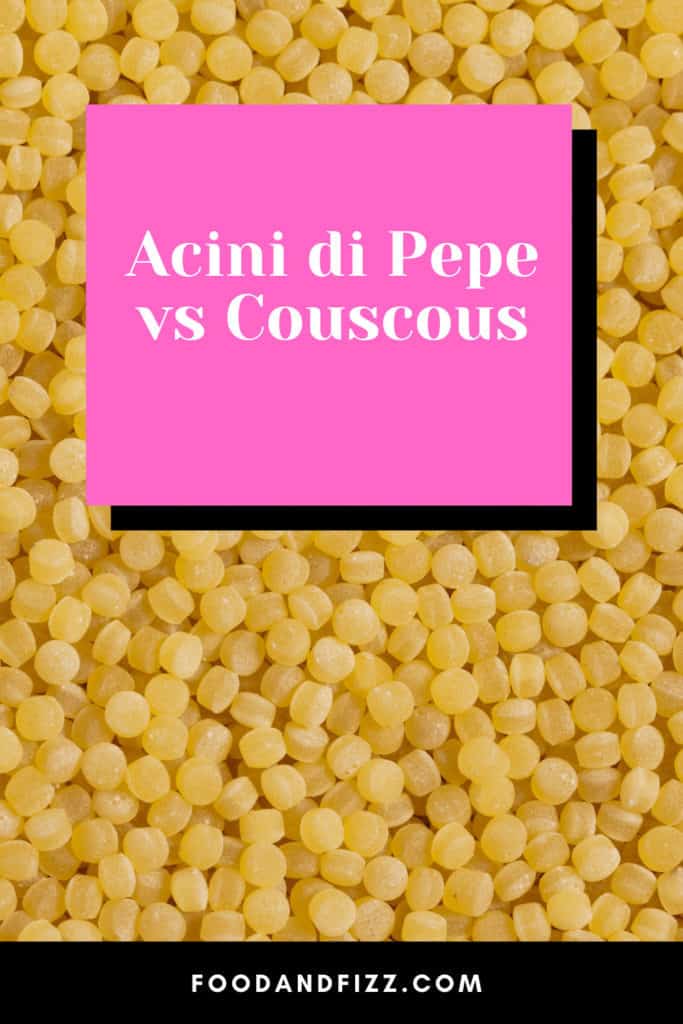
What is Acini di Pepe?
Acini di Pepe is a typical pasta in soups, such as Italian wedding soup or pasta salads.
Its name is Italian for “grains of pepper.” It is a tiny pasta made of semolina wheat. Semolina is a coarse flour made from durum wheat. As the source is durum wheat, this pasta is not gluten-free.
It has a small round shape. As the name indicates, Acini di Pepe looks like peppercorns made of pasta.
Because of the shape and ingredients in Acini di Pepe, it quickly absorbs flavors.
The flavor won’t get lost when added to a soup or pasta salad; it will stand out.
Acini di Pepe is a great source of protein and fiber.
While Acini di Pepe has a high carbohydrate level, it is less than many other types of pasta.
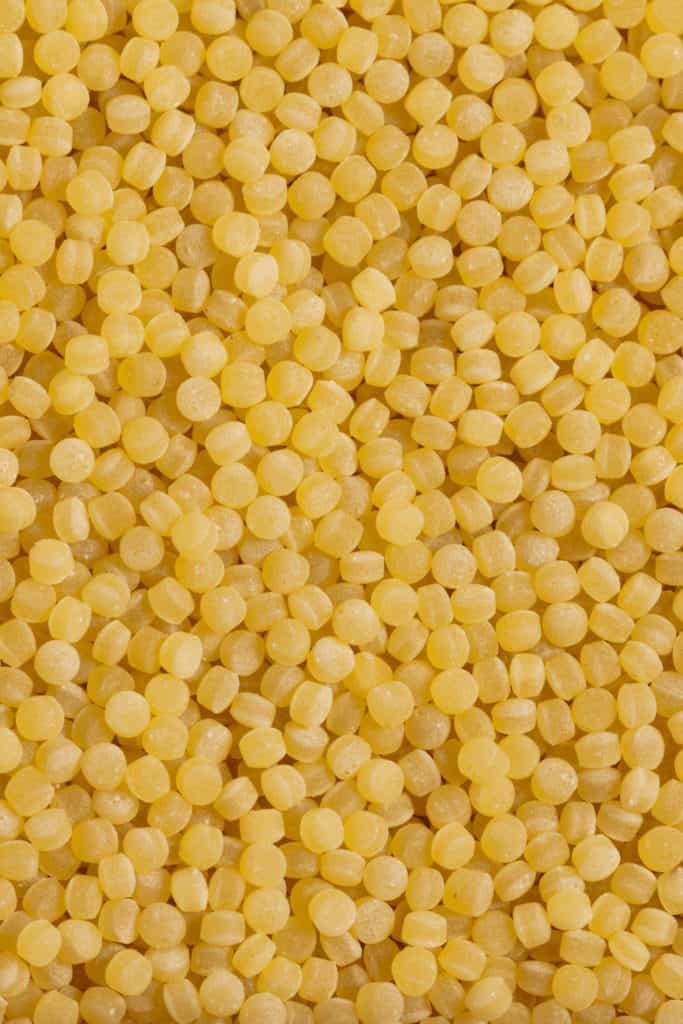
What is Couscous?
While many people may mistake couscous for a grain, it is a type of pasta.
It looks similar to quinoa. However, it has a fluffy and light texture. It is not a good texture source in a dish.
According to BBC food, couscous is a healthy choice for pasta. It is full of nutrients and vitamins.
It is also lower in carbohydrates than many other forms of pasta. It also provides a great source of protein and fiber.
Couscous is a base for many Middle Eastern and North African countries.

Acini de Pepe vs. Couscous
Taste
Taste is where Acini di Pepe and couscous can be pretty similar but not the same. Both kinds of pasta should be cooked in either broth or spice-enriched water. Because of their shape, they absorb the flavor of what you cook them in.
Couscous is designed to be more flavorful. It is recommended that you never cook couscous in plain water.
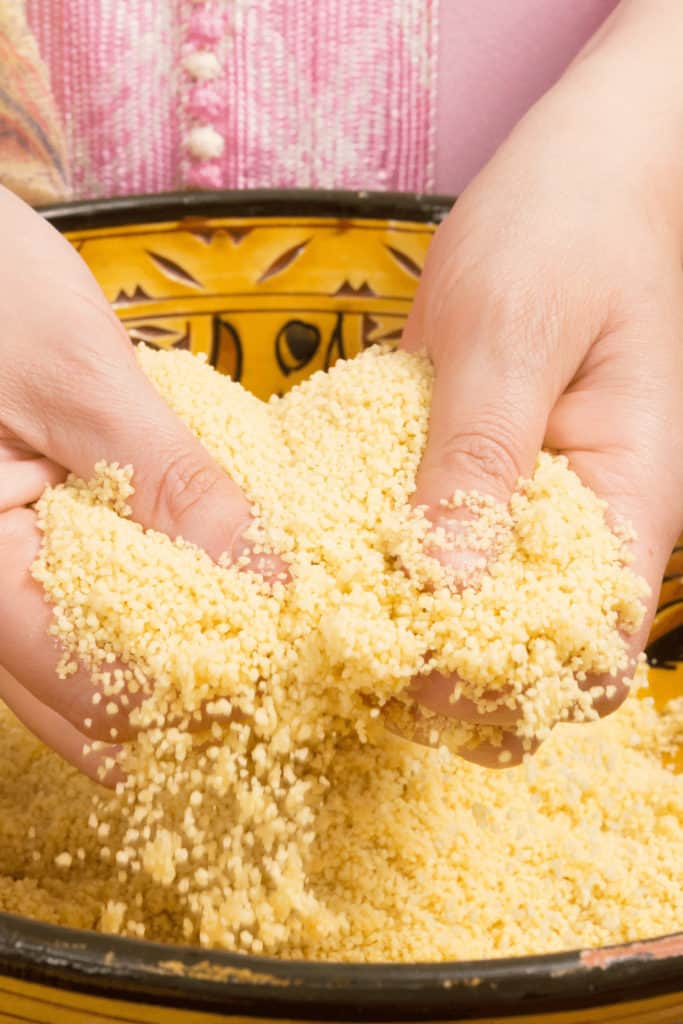
Cooking and Texture
Acini di Pepe is a popular pasta used in soups or pasta salads. It is pasta that holds moisture well without becoming mushy. It tastes best when served in sauce.
When cooking Acini di Pepe, it is recommended to use broth. This way, the pasta will soak up the flavor.
If you do not have broth on hand and still want some added seasoning in the cooking process, add spices or vinaigrettes to the water as you cook Acini de Pepe.
Bring the liquid to a boil and add the Acini di Pepe. Your cooking time depends on the texture that you are looking for.
If you want it to have a little more of a distinguished texture, cover it and cook it for about six minutes before draining.
If you’re making Acini di Pepe, add it to the soup. If you want it to be softer in texture, add the boiling water, and cover it for eight minutes.
If you cook Acini di Pepe for longer than it should, you’ll end up with mushy pasta. If you undercook it, you will find that it has a crunch.
Couscous should have a light and fluffy texture when cooked properly.
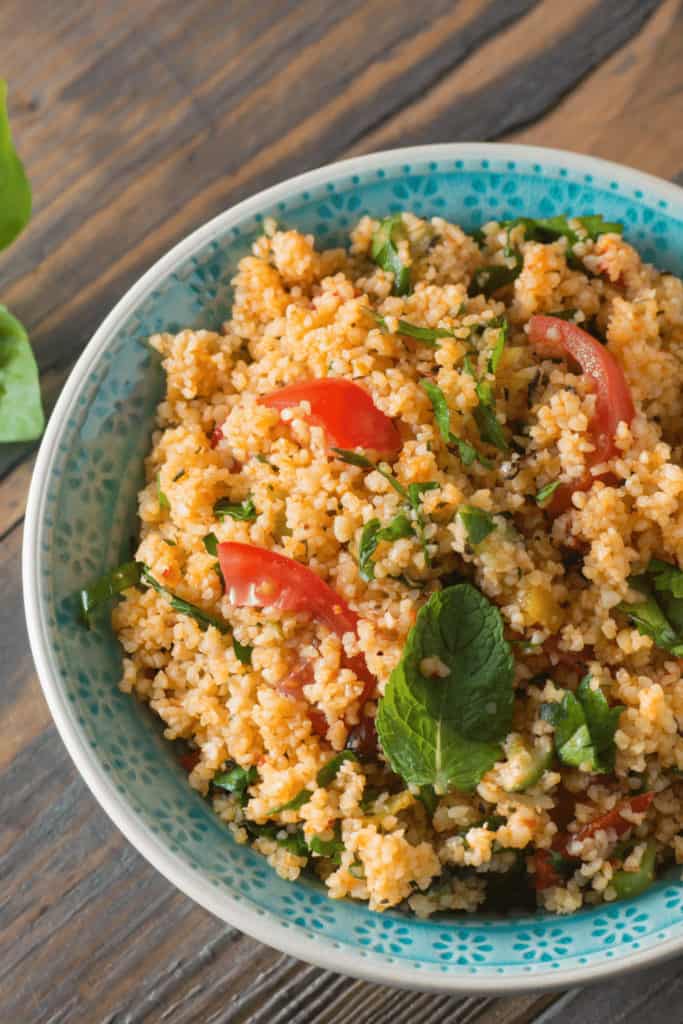
If your couscous is mushy, you’ve either overcooked it or didn’t follow the proper steps while cooking.
If it has a grainy texture, then it is undercooked. There are a few methods to cook couscous.
The most traditional method is steaming. This process produces the ideal fluffy texture that you are looking for.
To steam the couscous, boil an inch or two of water. Avoid using just water. Cocus is a pasta that absorbs flavors.
Adding spices to your boiling water will make the couscous stand out.
It takes around fifteen minutes, but don’t leave it to sit. Be sure to stir it while cooking; otherwise, you won’t correctly ‘fluff’ your couscous.
To boil the couscous, you want to bring the broth to a boil, add salt, and once there is a rolling boil, add the couscous.
Turn the heat down and cover and steam for around five minutes.
The next step is the most important. Using a fork, you need to ‘fluff’ the couscous. Using a fork to move the couscous around gives you that fluffy texture and avoids a mushy mess.
Couchois is a pasta that benefits from seasoning.
Because of the way that it puffs up, it absorbs the liquid or steam that you are cooking it in.
That’s why using broth, or seasoned water is best.
While many people tend to stray from adding salt, couscous is one of the pasta that you should add salt to the cooking broth or seasoned water.
Acini De Pepe Substitutes
Good substitutes for Acini De Pepe are:
- Orzo
- Israeli couscous
- Pastina
- Pearl barley
- Rice
Frequently Asked Questions About Acini di Pepe vs. Couscous
Can I substitute couscous for Acini di Pepe?
Regular couscous does not make the best substitute because of its texture. You can, however, use Israeli couscous in a pinch. If you want a substitute for Acini di Pepe, orzo is the best. It has a similar absorption rate.
Is Israeli couscous the same as regular couscous?
Unlike regular couscous, Israeli couscous is toasted in its pasta form. Because of the toasting process, Israeli couscous has a nuttier flavor than regular couscous. Israeli couscous is also typically made in a factory setting.
Is Acini De Pepe the same as couscous?
Acini De Pepe is not the same as couscous. Both are made from a coarse flour called Semolina, made of durum wheat. However, they are not a good substitute as their texture and flavor differs. Israeli couscous is toasted.
Conclusion about Acini di Pepe vs Couscous
Acini di Pepi is a more fitting choice for soups and pasta salads. Couscous should be used in dishes that benefit from its light, fluffy texture. They can be used as good substitutes for each other. Acini di Pepe vs. couscous has many similarities and a few differences.

